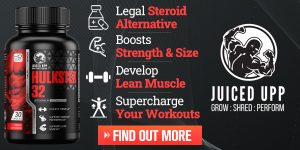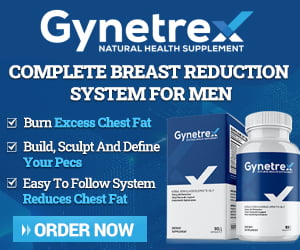Bodybuilding
Every Mr. Olympia’s Secret to Win the Title

Every Mr. Olympia’s Secret to Win the Title is as follows. Mr. Olympia is a big bodybuilding contest allowing elite bodybuilders to compete. Only 15 men have won the coveted title since its inception in 1965. Mr. Olympia takes place every year, and many goodies come the winner's way. Every former champion in this contest has his secrets, and Mr. Olympia's secret to winning the title is a unique strategy that helped them clinch the title. These amazing muscular men have been generous enough to share their tips on various platforms. In this article, we shall be highlighting the strategies they used to emerge on top of everyone else. Note that some have won the title more than once, so we want to know how they pulled that off.
Larry Scott (1965-1966)
Larry Scott was the first bodybuilder to win the Mr. Olympia title in 1965. Through his website larryscott.com, the muscular man detailed how he prepared for the title and went ahead to win it. Scott highlights 33 strategies that would give any bodybuilder that dared to follow them a competitive edge. However, #29 is the most emphasized point, where he mentions pain zones. Scott learned the pain zones for every exercise and how to gain up to 80% growth by focusing on that.
Sergio Oliva (1967-1969)
He was a former army man who fought Fidel Castro's army in the Colombian jungles before venturing into competitive bodybuilding. Like every Mr. Olympia's secret to winning the title is centered on a diet. Oliva had no specific diet, but he would eat a large volume of whatever he laid his hands on and add two gallons of water daily. He also ensured to eat lots of steak and eggs for his big muscles. Sergio Oliva met his untimely death when his wife shot him five times.
Arnold Schwarzenegger (1970-1975, 1980)
Arnold is considered one of the most successful bodybuilders in history. He dominated the Mr. Olympia contest in the 70s and left shoes too big for anyone to fit in. Commando's top secret is training a specific body part every time Oliva visits the gym. For instance, he could decide to work on his shoulders today and his biceps tomorrow. The trick ensures no body part is left behind, resulting in a uniformly-built body structure.
Also Read:: What Are the Stages of Topical Steroids Withdrawal?
Franco Columbu (1976, 1981)
He was Arnold Schwarzenegger's training partner, and the two did many things together. Like every Mr. Olympia's secret to win the title, Franco had a secret that made him successful in bodybuilding - learning to take care of his body. He ensured to rest every 7th day of working out to allow his body time to recover. The resting period enables the muscles to grow. Franco Columbu also alternated his exercises to achieve his bodybuilding goals effectively. No wonder Columbus became one of the most successful Mr. Olympias in the bodybuilding industry.
Frank Zane (1977-1979)
A three-time winner, Frank Zane was a force to reckon with in his prime. He won the title not only because he was naturally endowed with a big body, but he also put a lot of hard work into it. His secret lies in his mental approach to training. Mr. Zane believed that focusing on a particular aspect of training at a time allowed him to realize maximum results. Zane also eliminated things that didn't matter and referred to them as extraneous variables. He would concentrate on his strong points and capitalize on them during the competition.
Chris Dickerson (1982)
Although he was a one-time winner, Chris Dickerson was a formidable opponent on stage. The bodybuilding legend focused on his diet and centered on many natural vitamins, carbs, and protein. Additionally, he had a progressive workout plan; he started with the abs, chest, biceps, triceps, etc. Dickerson focused on light weights and high reps, but his most precious weapon against all opponents remains a balanced diet.
Samir Bannout (1983)
Another one-time winner of this title, Samir Bannout, is one of the few bodybuilders who admitted to using steroids. The lion of Lebanon had an impressive back that appalled the judges in the 1983 Mr. Olympia competition. Bannout's decision to develop the back saw him crowned the winner, beating many formidable opponents. Like every Mr. Olympia's secret to winning the title, he also capitalized on his strong back.
Lee Haney (1984-1991)
Haney emphasizes adding quality muscle for long-term benefits. He achieved this by combining mass and definition. Lee Haney weaponized this secret and won the coveted title eight times. The report involves working on every muscle in the body until it erupts to show fissures and faults. Haney would then work to sculpt, hammer, and chisel out to bring out a killer frame. These two aspects of bodybuilding are achieved through sweat and toil, as Haney would put it.
Dorian Yates (1992-1997)
Don't Miss:: Why An Experienced Lifter Must Use A Coach
Dorian Yates used his woes at a youth detention center in England to become one of the best bodybuilders. Yates' bodybuilding career had principles that saw him scoop the title six times. The five principles that guided his training include:
Rest-pause training principle
Forced reps training principle
Descending sets training principle
Partial reps training principle
Reverse-gravity training principle
These techniques have proven quite effective in the long term and would come in handy if you wish to follow in his footsteps. And his was another every Mr. Olympia's secret of winning the title.
Ronnie Coleman (1998-2005)
Ronnie Coleman started as a footballer before venturing into bodybuilding. He had a robust training program comprising squats, lunges and leg extensions, hack squats, and leg presses. However, Coleman's biggest secret is a modified push/pull/leg split. He would train six days a week and rest on the 7th. Ronnie Coleman ties with Lee Haney as the most successful Mr. Olympias in history.
Jay Cutler (2006-2007, 2009-210)
Jay Cutler unseated Ronnie Coleman by winning the title in 2006. He went ahead to defend it the following year. It would be best if you were hardcore to keep up with Cutler's 10-Rule Never-ending-growth training routine. However, the most intriguing part of his training is the 'meat and potatoes' shoulder training exercises. Apart from that, Cutler also did the seated dumbbell overhead presses. These two exercises combined gave him an enviable upper body structure. For a man who worked on the family concrete business to save for a gym membership, winning the Mr. Olympia title was a befitting reward.
Dexter Jackson (2006-2008)
Jackson also emphasized building quality muscles for long-term benefits. He weighed 215 pounds at 39, a 78-pound increase from 21 years. Upcoming bodybuilders and fitness experts have been examining him to try and discover his secrets. Jackson had a 6-point plan to emerge at the top in every competition. Here is his plan's summary:
- Find a good trainer
- Change the nature of training with age
- Watch his diet keenly with regular cut-backs
- Replace heavyweights with machine workouts when old age comes knocking
- Flexing his arms whenever he felt doubtful of himself
- . Work out until you feel it in the muscles
Phil Heath (2011-2017)
Popularly known as 'The Gift won and defended the title six times. His secret is in recovery. After days of hard training, Heath embarked on a recovery process that involved stretching to reduce stiffness. The stretching also speeds up the muscle recovery period, which a seasoned bodybuilder needs. Apart from good recovery, he also focused on the diet by eating the right foods. In his prime, Phil Heath's overall goal was to gain as much muscle as possible without adding too much subcutaneous fat.
Shawn Rhoden (2018)
The 2018 title winner had a rough start at bodybuilding after tearing a couple of tendons in his right hand. However, this setback didn't deter him from becoming one of the best in the recent past. Having added about 100 pounds from when he started working out, he was among the oldest to win the title at 43. But what is Shawn Rhoden's secret to winning the title at such an old age? The late bodybuilder had a secret motivation that saw him defy all odds. He was criticized while on stage during the 2017 Mr. Olympia contest. The negative comments and criticism propelled him to win the title the following year.
Brandon Curry (2019)
Brandon Curry was the favorite to win the title in 2019 after a successful run in the Arnold Classic. He was among the oldest bodybuilders to ever win the title at 36. Like every successful bodybuilder, Curry has secrets that have kept him at the helm. For instance, he has a training philosophy you don't see in other bodybuilders. He mastered training techniques rather than focusing on strength alone like every Mr. Olympia's secret to win the title. Curry trains for longevity and makes the muscles work. To him, stimulation is better than weights and performance.
Mamdouh Elssbiay (2020, 2021)
The Egyptian sensation is the reigning and defending Mr. Olympia after unseating Brandon Curry. Mamdouh Elssbiay, unlike many pro bodybuilders, prefers a high-calorie diet. Ultimately, he has ended up with one of the most developed backs a bodybuilder can have. Besides diet, 'Big Ramy' is also an ardent believer in hard work. A lover of chicken and rice, Elssbiay would occasionally spice up his meal to make it tastier. Big Ramy would walk on a machine, then moderately, for 30-40 minutes daily. Perhaps this is the secret that helps him cut down on competition.
Related Article: 12 Muscle Supplements That A Skinny Guy Should Take
Overall
The Mr. Olympia competition is the ultimate contest for every bodybuilder, and winning the title is the dream of many. Also, Mr. Olympia's secret to winning the title is based on their unique physical attributes. Many bodybuilders do not attain this milestone even though they work so hard. However, some have won the title and defended it severally, which begs the question, what is their secret? Follow these legends on their social media profiles to learn more about their strategies.
Bodybuilding
Understanding Trenbolone-Induced Cough (“Tren Cough”)

Trenbolone, a potent anabolic steroid, can sometimes cause “tren cough”—a sudden and intense coughing episode shortly after injection. Although not exclusive to Trenbolone, it is more commonly associated with this substance due to its highly irritant nature.
 Click Here To Buy 1-Test Cyp 100 by Nakon Medical
Click Here To Buy 1-Test Cyp 100 by Nakon Medical
Mechanisms Behind Tren Cough
Solvent and Carrier Irritation
Trenbolone formulations often include volatile solvents like benzyl alcohol or benzyl benzoate, which may irritate lung tissues when absorbed quickly into systemic circulation.
Prostaglandin Release
Trenbolone promotes increased production of prostaglandins, particularly PGF2α. This compound triggers contraction in the smooth muscles of the lungs, leading to bronchoconstriction and coughing.
Micro-Oil Embolism
Tiny oil droplets from an injection can reach capillaries and travel to the lungs, causing mild embolic reactions that lead to temporary oxygen deprivation and coughing.
Histamine and Mast Cell Activation
For some individuals, Trenbolone triggers histamine release and mast cell activation, mimicking an allergic response and causing bronchospasms and cough reflexes.
Related Article: Best Syringes for Steroid Injection on Amazon
Using Salbutamol (Albuterol) to Manage Tren Cough
- Salbutamol, a widely-used β2-adrenergic receptor agonist, can alleviate tren cough symptoms by:
- Relaxing bronchial muscles, easing spasms that cause coughing.
- Inhibiting prostaglandin effects, reducing bronchoconstriction associated with PGF2α.
- Opening airways, preventing severe respiratory restrictions in susceptible individuals.
Application Methods
Inhaler (Optimal)
Take 1–2 puffs of salbutamol (100–200 mcg) 5–10 minutes before a Trenbolone injection. If coughing occurs afterward, additional puffs can swiftly resolve the issue.
Oral Tablets (Moderate)
Consuming 2–4 mg tablets 30–60 minutes before injection offers slower, longer-lasting relief but may be less effective than inhalation methods.
Nebulizer (Severe Cases)
For individuals with frequent episodes, nebulized doses of 2.5 mg salbutamol can provide substantial relief.
Preventive Measures to Reduce Tren Cough Risk
- Inject slowly to minimize systemic absorption and irritant effects.
- Split doses to lower reaction severity with smaller quantities.
- Opt for ventrogluteal injection sites, which have fewer blood vessels, reducing oil embolism risk.
- Choose lower-concentration solutions to lessen irritation, as higher concentrations (e.g., Tren Ace 200 mg/ml) are more likely to provoke reactions.
What Other Steroids Can Induce Coughing?
Here's a curated list of peptides, SARMs, and PEDs that may potentially cause coughing or respiratory irritation in bodybuilders and fitness enthusiasts:
Peptides
IGF-1 LR3 (Insulin-like Growth Factor): Known for its anabolic effects, IGF-1 LR3 can occasionally cause mild respiratory irritation due to systemic absorption.
TB-500 (Thymosin Beta-4): While rare, improper injection techniques or high doses may lead to transient coughing episodes.
GHRP-6 (Growth Hormone-Releasing Peptide): This peptide can stimulate histamine release, potentially leading to bronchospasms and coughing.
SARMs (Selective Androgen Receptor Modulators)
RAD-140: (Testolone) Some users report throat irritation or coughing, often attributed to solvents used in liquid formulations.
YK-11: Known for its myostatin-inhibiting properties, YK-11 may cause mild respiratory discomfort in sensitive individuals.
LGD-4033 (Ligandrol): Though uncommon, some users experience coughing due to carrier solvents or allergic-like reactions.
PEDs (Performance-Enhancing Drugs)
Boldenone Undecylenate (Equipoise): This injectable steroid can cause “Equipoise cough,” similar to tren cough, due to oil embolism or irritant solvents.
Testosterone Suspension: The water-based formulation may lead to coughing episodes if injected improperly or absorbed rapidly.
Nandrolone Decanoate (Deca-Durabolin): While less common, coughing can occur due to histamine release or systemic irritation.
More Tips to Minimize Coughing Risks
- Use proper injection techniques to avoid embolic reactions.
- Opt for lower-concentration solutions to reduce irritant effects.
- Consider antihistamines or bronchodilators for individuals prone to respiratory sensitivity.
Read More: Joint Stiffness: How to Manage It While on AAS
Are There Alternatives to Cough-inducing Steroids?
Here are some alternatives to cough-inducing steroids that can provide similar anabolic effects while minimizing respiratory irritation:
Peptides
IGF-1 LR3 (Insulin-like Growth Factor)
Promotes muscle growth and recovery without the irritant properties of certain steroids.
TB-500 (Thymosin Beta-4)
Enhances tissue repair and reduces inflammation, making it a safer option for recovery.
BPC-157 (Body Protection Compound)
Known for its healing properties, it supports muscle repair and joint health.
SARMs (Selective Androgen Receptor Modulators)
RAD-140 (Testolone)
Provides significant muscle-building effects with fewer systemic side effects compared to traditional steroids.
LGD-4033 (Ligandrol)
Boosts lean muscle mass and strength without the risk of respiratory irritation.
MK-677 (Ibutamoren)
Stimulates growth hormone release, aiding in muscle growth and recovery.
Natural Alternatives
Turkesterone
A plant-based ecdysteroid that supports muscle protein synthesis and recovery.
Ecdysterone
Another natural compound that mimics anabolic effects without the harsh side effects.
Creatine Monohydrate
Enhances strength and muscle mass through improved energy production during workouts.
Other Options
Human Growth Hormone (HGH)
Promotes muscle growth and fat loss, though it requires careful monitoring due to potential side effects.
Testosterone Boosters
Natural supplements like D-Aspartic Acid or Tribulus Terrestris can help optimize testosterone levels for muscle growth.
SARMs Alternatives
Legal and safer versions of SARMs are available, offering similar benefits without the risks associated with traditional SARMs.
Overall
We have explored the phenomenon of "tren cough," a sudden, intense coughing episode often caused by Trenbolone injections due to factors like solvent irritation, prostaglandin release, micro-oil embolism, or histamine activation. Preventive measures such as using salbutamol (via inhaler, oral tablets, or nebulizer), injecting slowly, splitting doses, and opting for lower-concentration solutions were highlighted.
Additionally, alternative compounds to tren cough-inducing steroids were discussed, including peptides like IGF-1 LR3 and TB-500, SARMs such as RAD-140 and LGD-4033, and natural options like Turkesterone, ecdysterone, and creatine. These alternatives provide anabolic effects while minimizing respiratory side effects. The conversation also underscored the importance of proper injection techniques and thoughtful compound selection to reduce risks.
Bodybuilding
Mastering Bodybuilding in 2025: Top Fitness Tips for Success

Bodybuilding is more than just a sport; it's a lifestyle that requires dedication, discipline, and a thorough understanding of fitness principles. As the world of fitness continues to evolve, bodybuilders must stay updated with the latest trends, techniques, and scientific advancements to achieve their goals. In 2025, several innovative approaches are redefining bodybuilding. Here are essential fitness tips for bodybuilders to excel this year.
Read More: Bodybuilder Winter Clothing: Staying Warm and Stylish
Embrace Technology-Driven Workouts
In 2025, technology plays a significant role in bodybuilding. Wearable devices, fitness apps, and virtual reality (VR) training are now integral components of an effective workout regimen.
Wearable Devices
Modern wearables track everything from heart rate and sleep patterns to muscle activation and caloric expenditure. Utilize these devices to monitor your progress and make data-driven adjustments to your training and nutrition plans.
Fitness Apps
Leverage fitness apps for customized workout plans, progress tracking, and virtual coaching. Many apps now incorporate artificial intelligence to provide personalized feedback and recommendations.
Virtual Reality Training
VR technology offers immersive workout experiences, allowing bodybuilders to simulate different training environments and scenarios. This can enhance motivation and add variety to your routine.
Focus on Functional Strength
While hypertrophy (muscle growth) remains a primary goal, functional strength is gaining importance. Functional strength training improves overall performance, reduces the risk of injury, and enhances daily activities.
 Check Out Our1 4 Weeks Quality Strength & Lean Muscles
Check Out Our1 4 Weeks Quality Strength & Lean Muscles
Compound Movements
Incorporate compound exercises like squats, deadlifts, and bench presses. These movements engage multiple muscle groups and joints, promoting balanced strength development.
Core Stability
Prioritize exercises that strengthen the core, such as planks, Russian twists, and leg raises. A strong core supports better lifting mechanics and reduces the risk of lower back injuries.
Optimize Nutrition for Muscle Growth and Recovery
Nutrition is the cornerstone of successful bodybuilding. In 2025, the focus is on personalized nutrition plans tailored to individual needs and goals.
Protein Intake
Ensure adequate protein intake to support muscle repair and growth. Aim for 1.6 to 2.2 grams of protein per kilogram of body weight per day, depending on your training intensity and goals.
 Click Here to Buy SynthaTrope By SynthaPharma
Click Here to Buy SynthaTrope By SynthaPharma
Nutrient Timing
Pay attention to nutrient timing to maximize muscle recovery and growth. Consume protein and carbohydrates within 30 minutes post-workout to replenish glycogen stores and kickstart muscle repair.
Supplements
Utilize supplements wisely. Creatine, branched-chain amino acids (BCAAs), and omega-3 fatty acids are popular choices for enhancing performance and recovery.
Prioritize Mental Health and Mindfulness
Mental health is increasingly recognized as a critical component of overall fitness. Incorporating mindfulness practices can improve focus, reduce stress, and enhance performance.
Meditation
Incorporate meditation into your daily routine to reduce stress and improve mental clarity. Mindfulness meditation can enhance your mind-muscle connection during workouts.
Visualization
Use visualization techniques to mentally rehearse your workouts. Visualizing successful lifts and achieving your goals can boost confidence and motivation.
Rest and Recovery
Prioritize rest and recovery to prevent burnout and overtraining. Ensure you get 7-9 hours of sleep per night and incorporate rest days into your training schedule.
Leverage Advanced Training Techniques
Advanced training techniques can help break through plateaus and stimulate muscle growth. In 2025, several methods are gaining popularity among bodybuilders.
Blood Flow Restriction (BFR) Training: BFR involves restricting blood flow to the muscles during low-intensity exercises. This technique can enhance muscle growth and strength without the need for heavy weights.
Eccentric Training: Focus on the eccentric (lowering) phase of exercises. Eccentric training can stimulate greater muscle damage and growth compared to traditional concentric movements.
Periodization: Implement periodization into your training plan. Varying the intensity, volume, and type of exercises can prevent plateaus and ensure continuous progress.
Incorporate Recovery and Mobility Work
Recovery and mobility are essential for preventing injuries and maintaining optimal performance. In 2025, bodybuilders are paying more attention to these aspects of training.
Foam Rolling and Myofascial Release: Use foam rollers and massage balls to release muscle tightness and improve flexibility. Regular myofascial release can reduce soreness and enhance recovery.
Stretching: Incorporate dynamic stretching before workouts and static stretching after workouts. Stretching improves range of motion and prevents muscle imbalances.
Cryotherapy and Hydrotherapy: Explore recovery techniques like cryotherapy (cold therapy) and hydrotherapy (water therapy) to reduce inflammation and accelerate muscle recovery.
Engage in Continuous Learning and Community Building
The fitness industry is constantly evolving, and staying informed is crucial for success. Engage in continuous learning and connect with the bodybuilding community for support and motivation.
Educational Resources: Read books, watch videos, and attend seminars to stay updated on the latest research and trends in bodybuilding.
Community Engagement: Join online forums, social media groups, and local bodybuilding clubs. Sharing experiences and knowledge with fellow bodybuilders can provide valuable insights and encouragement.
Professional Guidance: Consider working with a certified personal trainer or coach. Professional guidance can help you optimize your training and nutrition plans, ensuring you're on the right track.
With your FB Plus subscription or active FB Plus Pass, you now have access to 124 weeks of our most popular workout programs, which typically sell for $10-$30 each. Additionally, our popular 4-week Meal Plan is included. This is on top of the 38 Challenges and Programs that are already available to Plus members.
We've also introduced a new feature that many of you have requested. To assist you in choosing your next program, you can now preview each day of any program from its detail view. This feature lets you see all the included workout videos and content before you schedule it, ensuring you know exactly what to expect.
Conclusion
In 2025, bodybuilding is more than just lifting weights; it's a holistic approach to fitness that encompasses technology, nutrition, mental health, and advanced training techniques. By embracing these fitness tips, bodybuilders can achieve their goals, stay injury-free, and enjoy a fulfilling fitness journey. Remember, consistency and dedication are key to success in bodybuilding. Stay committed, keep learning, and most importantly, have fun on your path to becoming the best version of yourself.
Bodybuilding
Top Video Games for Bodybuilders in 2025

There are several video games that can be great for bodybuilders, combining fitness and fun! Here are some of the best options:
Ring Fit Adventure (Nintendo Switch)
The game uses the Ring-Con and Leg Strap to guide you through various exercises and adventures. It's a fun way to get a full-body workout while playing a game.
Fitness Boxing 2: VR Boxing Remastered (PlayStation VR)
It offers a full-body boxing workout with a variety of punches and combos. It's a great way to improve your fitness while enjoying a virtual boxing experience.
Must Read: Marvel-Inspired Training Clothing on Amazon
Just Dance 2024
This popular dance game gets you moving to the beat with a variety of songs and dance routines. It's a fun way to burn calories and improve your coordination.
Zumba Fitness
Burn It Off (Nintendo Wii): This game offers a fun and energetic Zumba workout, perfect for those who enjoy dancing and want to get a good cardio workout.
Yoga for Beginners
If you're looking for a more relaxing workout, yoga games can help improve flexibility and reduce stress. Many of these games offer guided yoga sessions that you can follow along with.
Gym Tycoon
This game lets you build and manage your own gym, complete with various workout equipment and fitness classes. It's a great way to learn about different exercises and how to create effective workout routines.
The Sims 4: Fitness Stuff Pack
This expansion pack for The Sims 4 adds fitness equipment and activities to the game, allowing you to improve your character's fitness and join the athlete career.
Grand Theft Auto: San Andreas
While not a traditional fitness game, this classic game includes bodybuilding activities that can help your character gain muscle and improve fitness.
Knockout Home Fitness (Nintendo Switch)
This game offers a variety of boxing workouts that can help improve your strength and endurance.
Gym Simulator 24 (PC)
In this simulation game, you can build and manage your own fitness empire, creating workout routines and managing gym equipment.
Let's Get Fit (Nintendo Switch)
This game focuses on pure workouts, allowing you to set programs and follow along with digital trainers for a customized fitness experience.
Beat Saber (VR)
A popular VR game where you slash blocks to the beat of the music, providing an intense full-body workout.
Synth Riders (PlayStation VR)
This game combines freestyle dance and fitness, offering high-tempo tracks and multiplayer modes for a fun and energetic workout.
Yoga Master (PlayStation)
Designed by professional yoga coaches, this game offers a variety of yoga lessons and poses to improve flexibility and reduce stress.
Les Mills Bodycombat (PlayStation VR)
A martial arts-inspired workout game with a range of workout plans and coaching to keep you motivated.
OhShape Ultimate (PlayStation VR)
This game provides a full-body cardio workout with six sessions and two difficulty levels, designed to engage every part of your body.
These games offer a mix of cardio, strength, and flexibility workouts, making them great additions to your fitness routine.
Related Article: Supplemental Breast Milk for Bodybuilders
-

 Steroids2 years ago
Steroids2 years agoShavers and Other Body Grooming Equipment for Bodybuilders In 2023
-

 Steroids2 years ago
Steroids2 years agoChatGPT and Other Avenues to Find Great Bodybuilding Coaches
-

 Steroids2 years ago
Steroids2 years agoBest Oil Recommendations Before Competition for Subtle Shimmer
-

 Steroids2 years ago
Steroids2 years agoPowerlifting Vs Power Building: Find Out the Big Difference and When to Shift Between the Two
-

 Bodybuilding Products1 year ago
Bodybuilding Products1 year agoTelmisartan In Bodybuilding: An Expert’s Advice
-

 Nutrition2 years ago
Nutrition2 years agoEverything Nutritional Food: What’s Too Much Or Too Little
-

 Bodybuilding9 months ago
Bodybuilding9 months agoPrimal Movements: Our Ultimate Guide for Maximum Results
-

 Anabolic Steroids10 months ago
Anabolic Steroids10 months agoJoint Stiffness: How to Manage It While on AAS
-

 Steroids1 year ago
Steroids1 year agoAnadrol Cycle: Benefits, Doses, Alternatives, etc.
-

 Bodybuilding1 year ago
Bodybuilding1 year agoChia Seeds in A Bodybuilder’s Diet: An Expert’s Advice
-

 Anabolic Steroids1 year ago
Anabolic Steroids1 year agoLegality of Anabolic Steroids In Latin America
-

 Beginners2 years ago
Beginners2 years agoTren Cycle for Beginners
-

 Bodybuilding9 months ago
Bodybuilding9 months agoHow Effective is Bone Broth for Recovery?
-

 Steroids11 months ago
Steroids11 months agoOmnitope (Oxytocin)
-

 Bodybuilding1 year ago
Bodybuilding1 year agoHow Much Is Too Much Cardio? Understanding Heart Rate Zones
-

 Steroids9 months ago
Steroids9 months agoSleeping Positions for Effective Muscle Recovery
-

 Bodybuilding1 year ago
Bodybuilding1 year agoList of FDA-Approved Peptides
-

 Bodybuilding1 year ago
Bodybuilding1 year agoCalorie Dumping: A Bodybuilder’s Guide
-

 Bodybuilding8 months ago
Bodybuilding8 months ago2nd Edition of Natural Bodybuilding Competition Facts
-

 Bodybuilding2 years ago
Bodybuilding2 years agoCompetition Prep Cycle for Pro Bodybuilders
-

 Bodybuilding1 year ago
Bodybuilding1 year agoDemystifying Hypertrophy Training
-

 Bodybuilding9 months ago
Bodybuilding9 months agoAre Nootropics a Better Option to AAS?
-

 Steroids5 months ago
Steroids5 months agoOstarine For Beginners: The Ultimate Guide
-

 Anabolic Steroids12 months ago
Anabolic Steroids12 months agoHow Much Do You Know About B-AET? A Fat Burner You’ve Been Missing
-

 Product Reviews12 months ago
Product Reviews12 months agoTop Vitamins for Skin Health



















